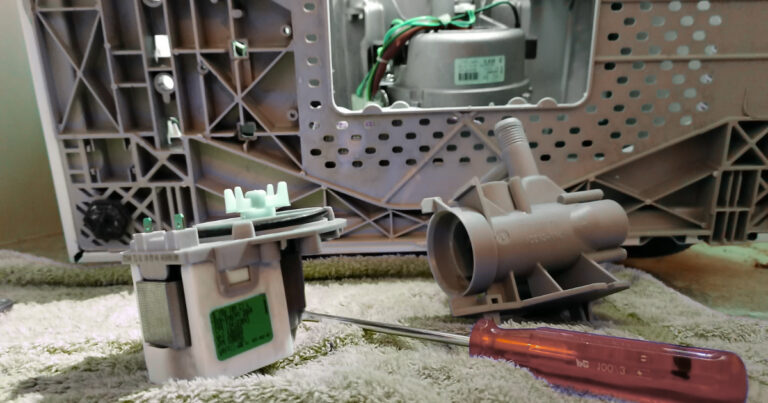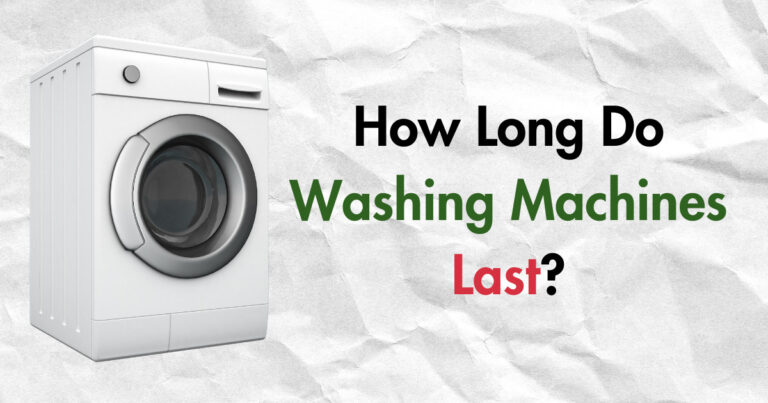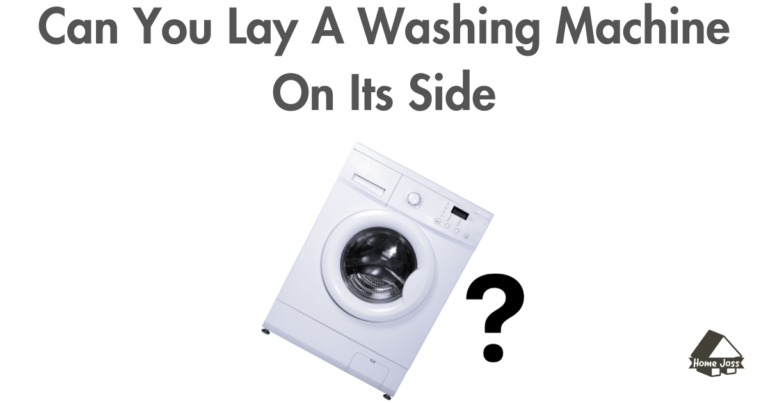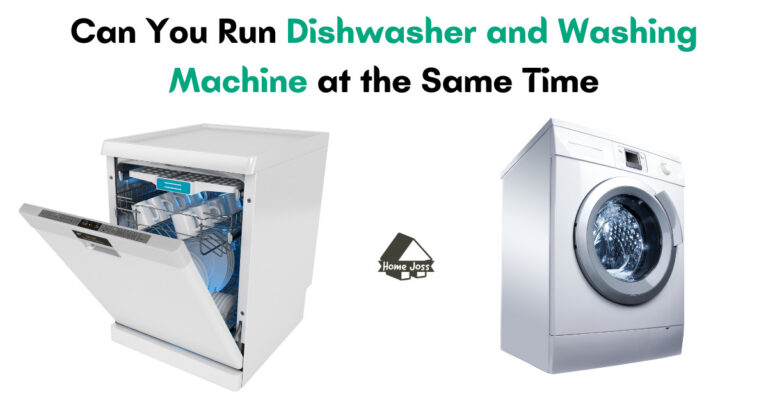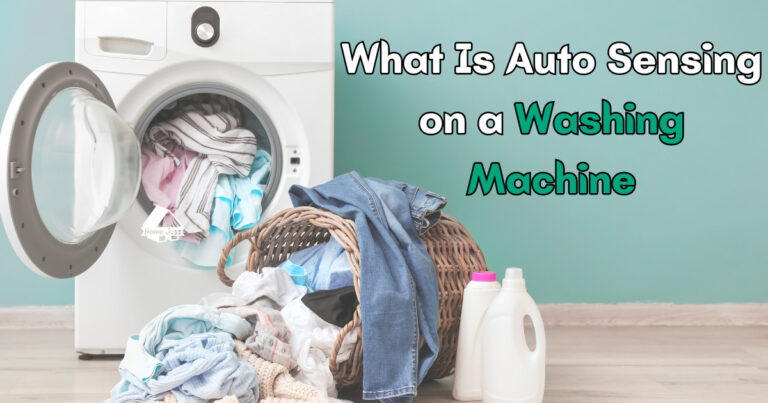Are you frustrated by the E3 error code that keeps appearing on your washing machine? Does your washer stop mid-cycle and fail to fill with enough water to start washing? Don’t worry; you’re not alone.
Many people have experienced this issue and have found effective solutions to fix it. In this comprehensive guide, we will explore various troubleshooting steps and tips to help you resolve the E3 error in your washing machine.
Understanding the E3 Error Code
E3 error code is a common problem faced by many washing machine owners. It typically indicates an issue with the machine’s motor or the communication between the motor and the control board.
When the E3 error appears, your washer may fail to spin, start a rinse cycle, or perform any washing functions.

How to Fix E3 Error in Washing Machine? (Steps)
These are some effective steps to fix the error on your washing machine. A little bit below I’m going to explain all those in detail so you can get a clear idea of what to do.
- Unplug machine
- Check motor wires
- Inspect control board wires
- Verify hall sensor
- Clean drain pump filter
- Ensure proper water supply
- Check water inlet valve
- Examine pressure switch
- Inspect water level sensor
- Seek professional help
But before diving into the solution let’s find out the reason behind this error.
Common Causes of the E3 Error
Several factors can contribute to the occurrence of the E3 error in your washing machine. Some of the most common causes include:
- Electronic glitches or communication issues
- Faulty wire connections on the drive motor or control board
- Problems with the hall sensor that monitors the tub’s speed and direction
- Issues with the water supply or water level sensor
Identifying the underlying cause is crucial for effectively resolving the E3 error and getting your washing machine back to normal operation.
How to Fix E3 Error in Washing Machine? (Video)
In the video, we’ll tackle the common issue many face with their washing machines – the E3 error. This error is typically associated with a malfunction in the motor or other internal components of the machine.
This video will guide you step by step on diagnosing the issue and provide practical solutions to fix it, ensuring your washing machine is back up and running efficiently.
Steps To Fix E3 Error in Washing Machine
To fix the E3 error in your washing machine, you can follow these troubleshooting steps:
Unplug the Washing Machine
Start by unplugging the washer from the power source. This step will allow the electronic panel to reset and potentially resolve any electronic glitches or communication issues causing the E3 error.
Leave the washer unplugged for at least 2-3 minutes to ensure that the capacitors on the control board discharge completely.
Check Wire Connections on the Drive Motor
Inspect the wire connections on the drive motor, which is responsible for powering the washer’s drum. To access the motor, remove the small back access panel of the washing machine.
Once exposed, examine the motor wire harness for any loose or damaged connections. Pay close attention to the Molex connector and the first few inches of the wire as it leaves the connector.
Inspect Wire Connections on the Control Board
The control board of the washing machine can also be a potential source of the E3 error. Check each wire connection on the control board to ensure they are tight and free from any damage.
Remove and reconnect each wire connection individually to ensure a secure fit. This step will help rule out any loose or faulty connections on the control board.
Verify the Hall Sensor
The hall sensor located on the back of the washer monitors the speed and direction of the drum. A faulty hall sensor or its wiring connections can trigger the E3 error. Test the hall sensor using a multimeter to check for proper functionality.
You can either test the sensor from the control board or directly at the sensor itself. If the hall sensor tests well, it is less likely to be the cause of the E3 error.
Consider Replacing the Motor
If all the above troubleshooting steps fail to resolve the E3 error, it may be necessary to replace the motor. Although the motor is generally reliable, a few units may have manufacturing defects that cause the error code.
Consult a professional technician or the manufacturer’s guidelines to determine the appropriate replacement motor for your specific washing machine model.
Additional Tips and Tricks

In addition to the troubleshooting steps mentioned above, here are some additional tips and tricks that may help resolve the E3 error in your washing machine:
Clean the Drain Pump Filter
A clogged drain pump filter can restrict water flow, leading to the E3 error. Locate the filter, typically found at the front of the washer, and unscrew it counterclockwise to remove it.
Clean the filter thoroughly, removing any debris, lint, or foreign objects that may be obstructing the pump. Reinstall the filter and ensure it is securely tightened in a clockwise direction.
Ensure Proper Water Supply
Check that your washing machine is receiving an adequate water supply. Ensure that the water valves are fully open and that the water pressure is sufficient. Low water pressure can prevent the machine from filling properly, triggering the E3 error. If necessary, consult a plumber to address any water supply issues.
Check for Clogs in the Water Inlet Valve
Inspect the water inlet valve for any clogs or blockages. The inlet valve controls the flow of water into the washing machine. If it is clogged, it may not allow enough water to enter the drum, resulting in the E3 error. Clean the valve or replace it if necessary.
Examine the Pressure Switch
The pressure switch, also known as the water level switch, monitors the water level inside the drum. A malfunctioning pressure switch can cause the E3 error to occur. Test the switch using a multimeter to ensure it is functioning correctly. If it is faulty, replace the pressure switch to resolve the error.
Inspect the Water Level Sensor
The water level sensor detects the amount of water in the drum and communicates with the control board. If the sensor is faulty or its wiring connections are compromised, it can trigger the E3 error.
Carefully examine the water level sensor and its connections for any signs of damage or loose connections. Replace the sensor if necessary.
FAQ about How to Fix E3 Error in Washing Machine
Can I still use my washing machine if the E3 error code appears?
It is generally not recommended to continue using the washing machine when the E3 error code appears. The error indicates a potential issue with the motor or other critical components, and running the machine in this state may cause further damage.
Why isn’t anyone talking about the drain pump causing the E3 error?
While some users have reported issues with the drain pump causing the E3 error, it is not as commonly discussed as other potential causes. However, it is worth checking the drain pump and ensuring it is operating correctly to rule out any problems.
What should the Ohm reading be for a “good” Hall effect sensor?
The specific Ohm reading for a “good” Hall effect sensor can vary depending on the manufacturer and model of your washing machine. Consult the manufacturer’s guidelines or seek assistance from a professional technician to determine the appropriate Ohm reading for your specific sensor.
Are there any specific model-related issues with the E3 error?
The E3 error can occur in various washing machine models, including those from Samsung and other brands. While some models may be more prone to the E3 error than others, the troubleshooting steps outlined in this guide are applicable to most machines experiencing this issue.
How often should I clean the drain pump filter?
Cleaning the drain pump filter is recommended every few months or whenever you notice a decrease in water flow or drainage issues. Regular maintenance prevents clogs and ensures optimal performance of your washing machine.
Can a faulty pressure switch trigger the E3 error?
Yes, a faulty pressure switch can potentially trigger the E3 error. The pressure switch is responsible for detecting the water level in the drum. If it malfunctions or fails to communicate with the control board properly, it can lead to the E3 error.
Is it possible to fix the E3 error without replacing any parts?
In some cases, the E3 error can be resolved without replacing any parts. By following the troubleshooting steps mentioned in this guide and ensuring that all wire connections are secure and free from damage, you may be able to fix the error without the need for part replacements.
How do I troubleshoot the water level sensor?
To troubleshoot the water level sensor, visually inspect the sensor and its connections for any signs of damage or loose connections. If everything appears to be in good condition, test the sensor using a multimeter to ensure it is functioning correctly. Replace the sensor if it is faulty.
Can I fix the E3 error by resetting the control board?
Resetting the control board may temporarily resolve the E3 error in some cases. However, if the error persists after a reset, it is recommended to follow the troubleshooting steps outlined in this guide to identify and address the underlying cause.
When should I consider calling a repair technician?
If you have followed all the troubleshooting steps mentioned in this guide and are still unable to resolve the E3 error, it is advisable to contact a professional repair technician. They have the expertise and tools necessary to diagnose and fix complex issues with your washing machine.
E3 errors in your washing machine can be frustrating, but with the right knowledge and troubleshooting steps, you can resolve the issue and get your washer back in working condition.
Follow the steps outlined in this guide, and remember to consult the manufacturer’s guidelines or seek professional assistance if needed. By addressing the underlying cause of the E3 error, you can ensure the long-term performance and reliability of your washing machine.
Note: The content provided in this article is for informational purposes only and should not be considered professional advice. Always consult the manufacturer’s guidelines or seek assistance from a professional technician for accurate diagnosis and repair of your specific washing machine model.


